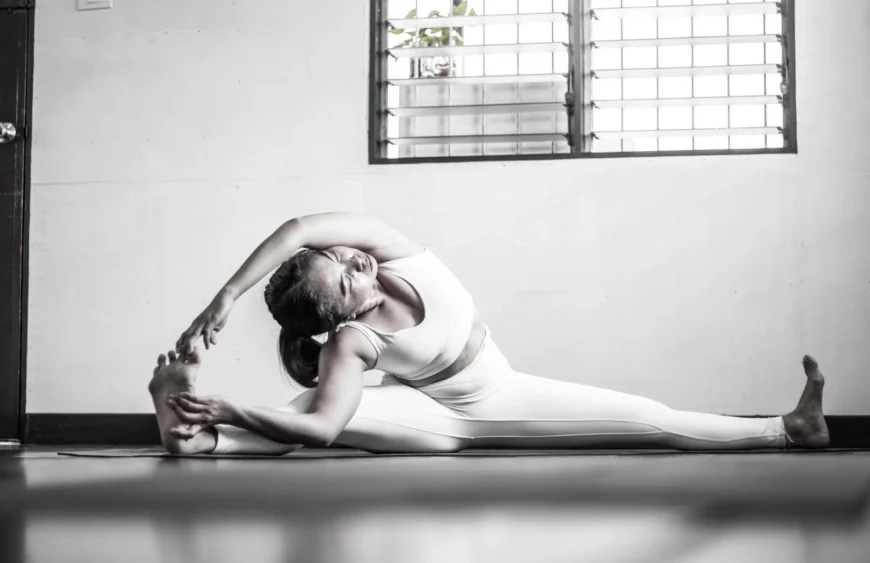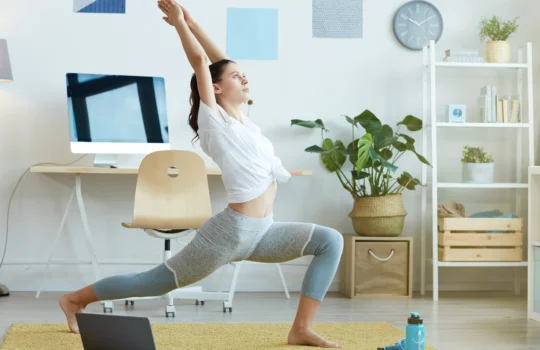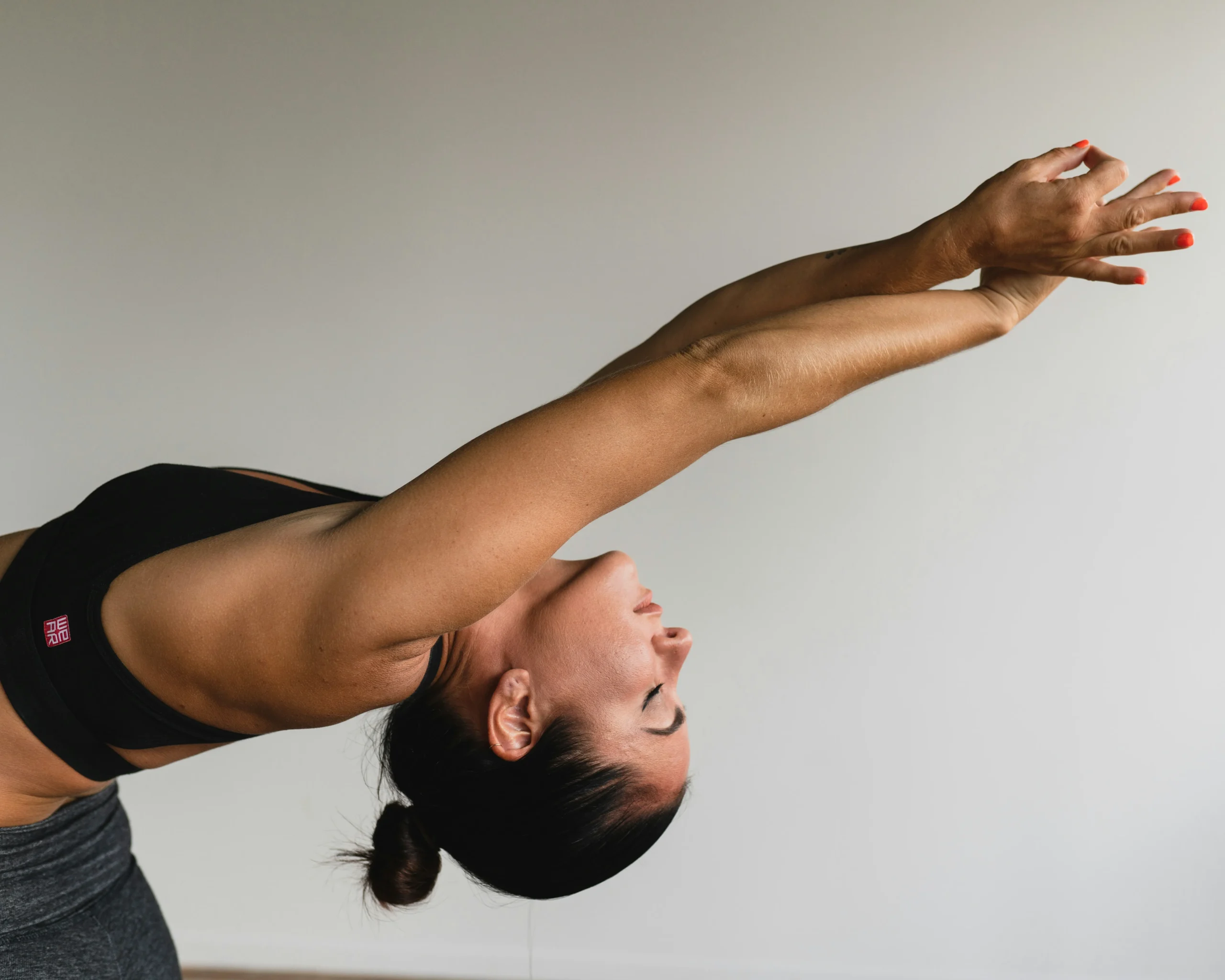Welcome to your new fitness revolution! If you’ve ever doubted the power of yoga as exercise, you’re in for a treat. Gone are the days when yoga was just a spiritual practice or a light stretching routine. Today, it stands out as a comprehensive exercise regimen that not only sculpts your body but also elevates your mind.
We’ll dive into 10 transformative benefits of making yoga your go-to workout. From enhancing flexibility to building mental resilience, you’ll see why so many people swear by the effectiveness of yoga as a pillar of physical fitness. So, roll out your mat, grab a water bottle, and let’s explore how this ancient practice can yield modern health benefits!
Table of Contents
1. Enhances Flexibility
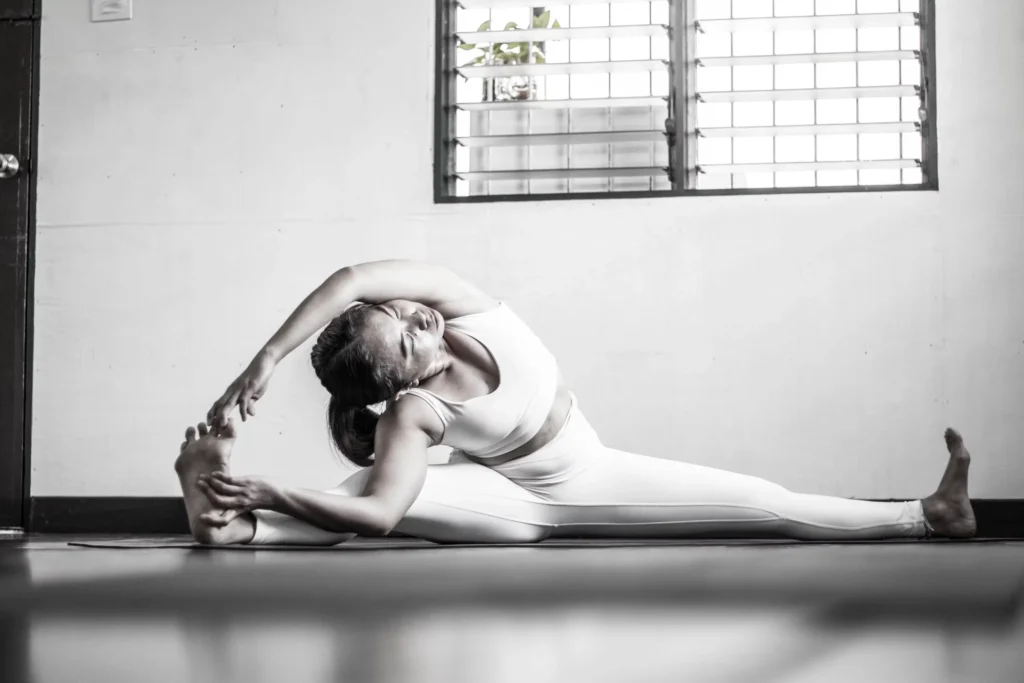
Why Flexibility Matters
Flexibility is more than just being able to touch your toes; it’s a vital component of overall health and fitness. Increased flexibility improves your range of motion, decreases your risk of injuries, and enhances your muscle coordination. Luckily, yoga as exercise is one of the best activities you can choose to boost your flexibility.
How Yoga Works Wonders
Yoga gradually loosens up your muscles and tendons, allowing for greater movement in joints and limbs. Each pose is designed to stretch different parts of the body, which in turn enhances tissue elasticity and overall flexibility. Poses like the Forward Bend, Pigeon Pose, and Cobra are just a few examples that target key areas prone to tightness.
Expert Insight
To back this up, numerous studies have shown significant flexibility gains in individuals who practice yoga regularly. For instance, a study published in the Journal of Yoga & Physical Therapy demonstrates a marked improvement in hamstring flexibility after just four weeks of consistent yoga practice.
Real People, Real Results
Meet Emily, a 30-year-old graphic designer who turned to yoga as a way to alleviate her chronic back pain. “Within a month of starting yoga, I felt a huge difference in my flexibility. I could move easier, and my back pain was nearly gone,” shares Emily. Her story is just one of many that highlight how effective yoga can be.
2. Builds Strength
Strong Body, Stronger Mind
When you think of strength training, yoga might not be the first thing that pops into your mind, but it should be! Yoga as exercise isn’t just about bending and stretching; it involves a variety of poses that require muscle strength and endurance. From holding a downward dog to mastering a warrior pose, each sequence builds muscle in a way that few other workouts can.
Yoga’s Unique Approach to Muscle Building
Unlike traditional weight lifting that often targets one muscle group at a time, yoga works several muscles simultaneously. Take, for example, the plank pose—while it primarily strengthens the core, it also engages your arms, shoulders, and legs. This holistic approach ensures a balanced build-up of muscle that supports both strength and flexibility.
Evidence That Speaks Volumes
A study featured in the International Journal of Yoga suggests that regular yoga practice significantly enhances upper body strength, endurance, and stamina. This is particularly beneficial for those who engage in sports or need to manage everyday physical tasks more efficiently.
A Testimonial to Inspire
Jordan, a 35-year-old software developer and weekend rock climber, found that incorporating yoga into his routine improved his climbing endurance and grip strength. “Yoga has not only made me stronger but also more mindful of my body’s capabilities and limits,” Jordan explains.
3. Promotes Better Breathing

Breathe Deep, Live Well
One of yoga’s most overlooked aspects is its capacity to improve respiratory health. The practice of yoga incorporates pranayama, or breathing exercises, which enhance lung capacity and the efficiency of the respiratory system. For anyone looking to boost their oxygen intake and control their breathing, yoga offers a natural solution.
Pranayama: The Art of Breathing
In yoga, breathing isn’t just a background activity—it’s a full-fledged exercise. Techniques like Ujjayi (Ocean Breath), Kapalabhati (Skull Shining Breath), and Anulom Vilom (Alternate Nostril Breathing) not only increase lung capacity but also help control stress and improve mental focus.
Research-Backed Benefits
Clinical trials have demonstrated that participants who practice yoga breathing exercises experience significant improvements in pulmonary function. This is especially beneficial for those with respiratory issues, athletes looking to enhance performance, and anyone interested in maintaining robust long-term health.
Real-Life Impact
Sophia, a long-time asthma sufferer, turned to yoga as a way to reduce her dependency on inhalers. “Learning to control my breathing through yoga has drastically cut down my asthma attacks and increased my activity levels,” she reports. Her experience is a powerful testament to the practical benefits of yoga for respiratory health.
- Read more What is Pranayama? The Ultimate Joy of Purifying Breath Technique for Beginners
- Read more Emotion Regulation: Why Pranayamas Are Better Than You’d Think?
4. Aids Weight Management
Shed Pounds, Gain Peace
If you’re looking to trim down, tone up, and achieve a healthier weight, yoga offers a unique combination of physical exercise and mental discipline that can significantly impact weight management. Yoga isn’t just about burning calories; it’s about developing a healthier relationship with your body and food.
Yoga’s Calorie-Burning Power
While yoga may not burn calories as quickly as some high-intensity workouts, certain styles of yoga, like Vinyasa or Power Yoga, are particularly effective for weight loss. These dynamic forms of yoga keep you moving constantly, which helps to burn calories and boost your metabolism.
Scientifically Supported Weight Loss
Research from the American Journal of Managed Care reveals that regular yoga practice is associated with reduced body mass index (BMI) and weight loss. Participants in the study who practiced yoga regularly for at least five years managed to avoid middle-age spread and maintained a healthy weight.
Transformation Story
Laura, a 42-year-old school teacher, started practicing yoga as part of a holistic weight loss program. “Yoga helped me lose 25 pounds not just by exercising but by helping me become more mindful about my eating habits,” she shares. Laura’s journey illustrates the dual benefits of yoga for both physical and mental aspects of weight management.
5. Improves Posture and Spine Health
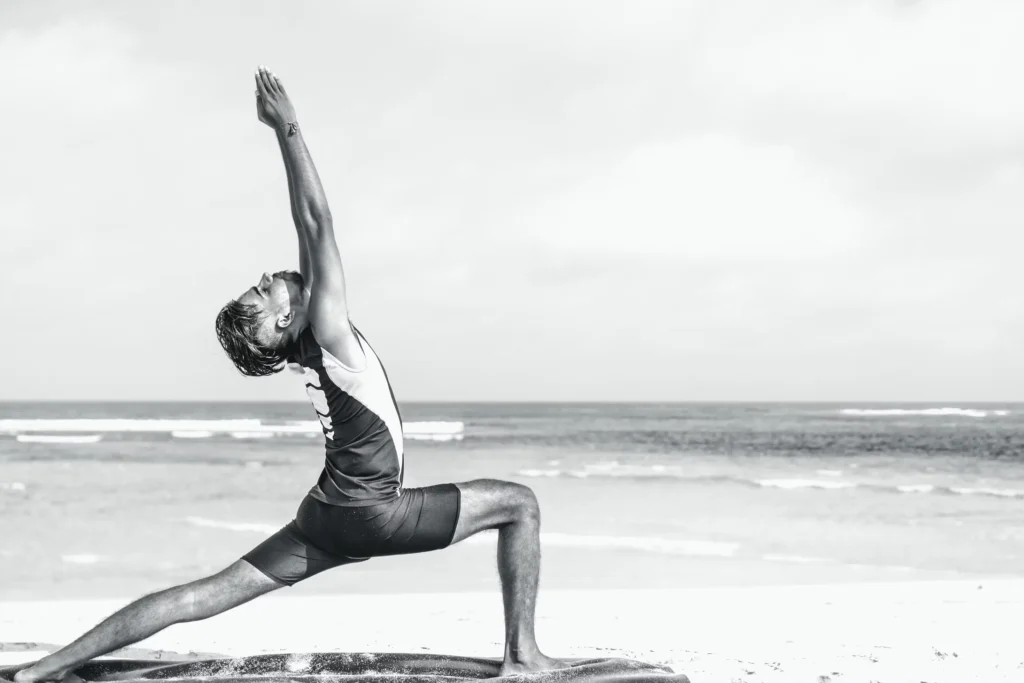
Stand Tall, Live Better
Good posture is not just about standing straight; it’s crucial for alleviating strain on your muscles and joints, especially around the spine. Yoga as exercise strengthens the muscles that support good posture, making it easier to maintain a healthy spinal alignment.
Yoga’s Alignment Techniques
Through a variety of poses focusing on alignment, balance, and strength, yoga helps correct poor posture over time. Poses like Mountain, Tree, and Warrior teach body awareness and encourage muscle activation necessary for good posture.
Backed by Experts
Chiropractors and physiotherapists often recommend yoga as a gentle yet effective way to improve posture and reduce the risk of back pain. Regular practice helps in elongating the spine and correcting imbalances in the body’s structure.
Personal Success
Mark, a freelance graphic designer, turned to yoga to combat the back pain associated with long hours at a desk. “After six months of yoga, not only is my back pain gone, but I also notice that I naturally sit and stand straighter,” he reports. This noticeable improvement in his daily life is a common benefit many find with regular yoga practice.
6. Boosts Mental Health
Harmony of Mind and Body
Yoga is more than physical exercise; it’s a therapeutic tool for mental wellness. By integrating body movements with mindful breathing, yoga helps reduce stress, anxiety, and depression, fostering an overall sense of well-being.
Mindfulness in Motion
The practice of yoga encourages a moment-to-moment awareness, which is a core aspect of mindfulness. This approach helps mitigate stress and promotes a peaceful mind. Techniques such as meditation and controlled breathing are essential components of yoga that help calm the nervous system and can even alter brain chemistry to enhance mood.
Clinical Endorsements
Studies published in the Journal of Psychiatric Research have found that yoga can decrease levels of cortisol, the stress hormone, and increase serotonin, often dubbed the happiness hormone, thereby improving mood and combating depression and anxiety.
Impactful Testimonials
Jessica, a 28-year-old marketing specialist, shares her experience: “Yoga has been my escape from the high stresses of work. It doesn’t just relax me; it also helps me stay happier and more balanced.” Stories like Jessica’s illustrate the profound impact yoga can have on mental health.
7. Enhances Concentration and Focus

Clarity and Cognitive Benefits
In today’s fast-paced world, the ability to concentrate and maintain focus is more valuable than ever. Yoga as exercise can significantly enhance these cognitive functions through techniques that cultivate concentration and mental clarity.
The Science of Focus
Practices within yoga, such as Dharana (focused concentration) and Dhyana (meditative absorption), train the mind to focus single-mindedly on a task or object, which enhances the brain’s ability to concentrate. These practices not only improve your immediate ability to focus but also contribute to long-term cognitive resilience.
Supporting Research
Research conducted by neuroscientists has shown that regular yoga practitioners exhibit improved brain functions related to sustained attention and executive functioning. The discipline of holding poses and maintaining breath work requires and builds significant mental focus.
Real-Life Enhancement
Tom, a 34-year-old software engineer and amateur chess player, credits yoga with improving his concentration levels both at work and during chess tournaments. “Yoga has sharpened my focus dramatically. I notice I make fewer errors and am more efficient,” says Tom. His experience underscores how yoga can be particularly beneficial in activities that require intense mental concentration.
8. Improves Balance and Coordination
A Steady Stance on Life
Balance and coordination are essential for everyday activities and sports, and yoga is one of the best exercises to enhance these skills. By teaching precise control over your body, yoga helps you develop a keen sense of spatial awareness, crucial for maintaining stability and coordination.
Core to Coordination
Yoga poses like Tree, Eagle, and Half Moon require you to maintain balance on one leg, which significantly improves your proprioception (body awareness) and coordination. Engaging and strengthening the core muscles also plays a critical role in stabilizing your entire body, enhancing both balance and posture.
Research Reinforces Balance
Studies in geriatric populations have shown that participants who engage in regular yoga practice experience fewer falls and improved motor coordination. This is particularly relevant as maintaining balance is crucial for preventing injuries, especially in older adults.
Voices from the Community
Diane, a 60-year-old retired teacher, started yoga to keep active in her golden years. “Yoga has not only helped improve my balance but has also enhanced my ability to coordinate movements while walking or engaging in other physical activities,” she explains. Her increased confidence in moving freely represents a significant quality of life improvement that many older adults gain from yoga.
9. Supports Joint Health

Ease and Motion for Joints
Joint health is vital for maintaining an active lifestyle, and yoga as exercise is exceptionally beneficial in this area. By promoting gentle movements and strengthening the muscles around the joints, yoga helps reduce the wear and tear that can lead to joint pain and disorders like arthritis.
Gentle on the Joints
Yoga’s low-impact nature makes it a suitable exercise for those with joint issues or arthritis. Poses that involve alignment, such as Warrior and Bridge, help distribute weight evenly, which alleviates undue stress on any one joint, promoting better joint health and flexibility.
Clinical Observations
Healthcare professionals often recommend yoga as part of a comprehensive treatment plan for joint health. Research has indicated that yoga can help reduce symptoms associated with rheumatoid arthritis, such as joint pain and stiffness, improving participants’ overall range of motion.
Success Stories
Robert, a 45-year-old office manager with early signs of arthritis, incorporated yoga into his weekly routine. “After starting yoga, I noticed a significant decrease in joint pain, and my flexibility has improved. It’s become an essential part of my health regimen,” Robert remarks. His story is echoed by many who find yoga therapeutic for joint issues.
10. Offers Community and Support
More Than Just Poses: A Yoga Family
One of the most heartwarming benefits of practicing yoga is the community it builds. Unlike many solo exercise routines, yoga often brings people together, creating supportive networks that foster a sense of belonging and shared growth.
The Strength of Supportive Networks
Yoga studios, classes, and even online forums serve as great places to meet people with similar wellness goals and lifestyles. The encouragement and motivation provided by a community can significantly enhance the physical benefits of yoga, making it a holistic approach to health.
Community Case Studies
Many yoga practitioners report that the friendships and connections they develop in yoga classes are as beneficial as the physical exercise itself. For instance, group yoga sessions are known for their positive vibes, where encouragement and collective energy can make challenging poses more accessible and fun.
Real Voices, Real Connections
Meet Anita, a 38-year-old freelance writer, who found solace and support in her yoga community after moving to a new city. “Joining the yoga class helped me not just to stay fit but also to find friends and a community who were there to support me through a major transition in my life,” she shares.
Conclusion of Yoga as Exercise
Transform Your Life with Yoga
Throughout this exploration of the ten profound benefits of yoga as exercise, we’ve seen how it surpasses mere physical activity, enriching lives with mental, emotional, and communal wealth. Whether you’re looking to enhance flexibility, build strength, or find a supportive community, yoga offers an accessible path to achieving your health and wellness goals.
Encouraged by countless success stories and supported by scientific research, it’s clear that incorporating yoga into your daily routine can lead to substantial improvements in both physical and mental health. Remember, the journey of yoga is one of continuous discovery and personal growth.
Additional Resources
Expand Your Yoga Journey
For those inspired to start or deepen their yoga practice, here are some resources that can help:
- Books:
- Light on Yoga by B.K.S. Iyengar – A comprehensive guide to yoga poses and breathing techniques.
- The Heart of Yoga: Developing a Personal Practice by T.K.V. Desikachar – Insights into making yoga a part of your daily life.
- Websites:
- YogaJournal.com – Offers extensive articles, pose directories, and meditation tips.
- DoYogaWithMe.com – Free and premium yoga videos for all levels.
- Apps:
- Down Dog – Provides personalized yoga workouts.
- Insight Timer – Offers guided meditations for relaxation and mindfulness.
- Local Studios and Community Centers:
- Don’t overlook local yoga studios and community centers which often offer beginner classes and community events.
Embark on your yoga journey and discover the transformative power of yoga as exercise. Roll out your mat, breathe deeply, and embrace the holistic benefits that await!

